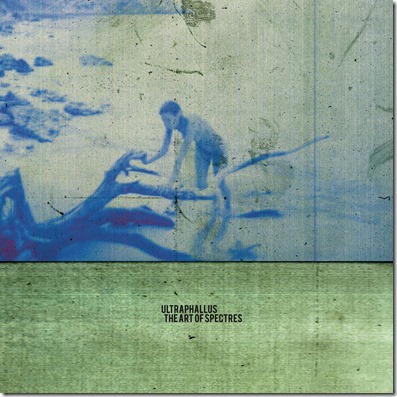Sub Rosa – SR406 – 5th May 2016
Christopher Nosnibor
There’s no escaping the band’s name. It’s striking, to say the least. Simply calling a band ‘phallus’ would be something, the connotations numerous and not all positive. Putting it out there is a strong challenge to the (potential) audience’s sensibilities, and is as likely to deter many listeners in itself. There may be puerile implications, and an element of silly shock, but what does this say about culture and society? Human history, even prehistory, is in many respects, the history of the phallus: the Romans were obsessed by the power of the phallus, rendering it a totem. Freud was famously fixated, and 60s and 70s feminism marked the opening of a discourse concerning phallocentric society, as they strove to rebalance things. While the phallus in this context is more metaphorical than literal, what matter is the fact that discourse is far from over.
While ‘cunt’ may represent the last bastion of hardcore swearing, and carries the most weight in terms of the offense it can impart, ‘it’s the hard dick that offends most’, as Philip Best spits on the Whitehouse track ‘Language Recovery’. Why is that? What is our society so hung up on the erection? Despite the enduring power of the phallus in society through the ages, art and popular culture is more given to celebrating the female form. And from classical antiquity (I’m thinking Michelangelo’s ‘David’, for example) to modern art (take Lucien Freud’s nude male portraits by way of an example here), male genitalia is understated if it’s to be accepted. It’s simply unimaginable that David, an image of the ‘perfect’ male form, could brandish a raging horn. Soft is art: hard is porn. The phallus may be all-powerful but it’s not acceptable on display, it’s ugly, repulsive, threatening, frightening, says society.
So what does this say about Ultraphallus? To take a blunt and literal view, individually and collectively, the band is cock. But not just any old cock. It’s more cock than that. It’s not only a throbbing erection, a pulsating meat truncheon, but amplified to the power of ten. Ultra… it has such a powerfully maximalist suggestion. This band isn’t just the simple encapsulation of the phallus, but thrusts into the public domain the phallus on a scale comparable to the Cerne Abas giant. Is it more confrontational and in your face than Throbbing Gristle? It’s a close call.
Appropriately, the music on The Art Of Spectres is overtly masculine: hard, heavy, rhythmic. It’s hard, uncompromising.
Ultraphallus are Phil Maggi (vocals, samples, electronics, trumpet, percussion); Xavier Dubois (guitars); Ivan Del Castillo (bass); Julien Bockiau (drums). A bunch of giant cocks. And they make challenging music, which pulls an eclectic range of styles together to forge something immense, dark and compelling. The press release notes that Ultraphallus defines their sound with some accents from styles including Western Music, Death metal, Doom-Rock, Avantgarde Psychedelia and Electronic Soundtracks, as a tribute to Rock Culture. But there’s a whole lot more besides lurking in the murky sonic depths of the seven tracks here.
Seven tracks were recorded in four days at Drop Out Studios, South London, with Tim Cedar (Part Chimp leader, Hey Colossus, ex-Penthouse…). The band say that the tracks are inspired by The Residents, Marc Bolan, Mark Frechette and Zabriskie Point, Swans, Autechre, David Bowie, Eva Ionesco, Polanski’s movie The Tenant and Death-Metal. In this respect, the title is germane, as the album finds the band exploring the spectres of their precursors and their peers. They loom large.
Opening track, ‘The Blood Sequence’ combines the grit of black metal with the squalling white noise of power electronics, delivered with the panache of Bauhaus and the theatrical gothic detail of Roz Williams era Christian Death. They really hit their stride with the second track, the seven-minute ‘’Madrigal Lane’ at the heart of which lies a throbbing bass and relentless beat.it builds hypnotically, reaching a frenzied climax of crashing cymbals while Maggi Hollers maniacally in a tsunami of reverb.
‘Let Him be Alistair’ finds Maggi hollering like a drunk impersonating Tom Waits over the skittering sonic backdrop, a slow grinding rhythm section churning out a grainy, Neurosis-like dirge. ‘Whitewasher’ is even slower and heavier: again, the percussion dominates, the lyrics are coarsely shouted, thick, and burning with anguish, evoking the spirit of Godflesh and ‘Greed’ era Swans to punishing and painful effect as the song batters the listener into submission over the course of seven-plus crushing, doom-laden minutes. If the tone mellows and the oppression lifts during the last two tracks, the hypnotic percussion and repetitive nature of the riffs prove every bit as powerful as the final track, ‘Sinister Exaggerator’ builds to a spiralling psychedelic shoegaze swirl.
Despite all of the myriad comparisons and parallels, The Art Of Spectres goes a long way from being any simple homage to the annals of rock and metal, because for all of the references, Ultraphallus don’t really sound like anything or anyone else.
